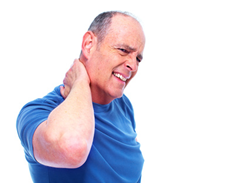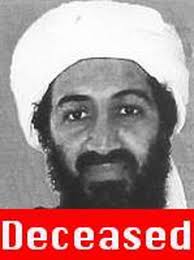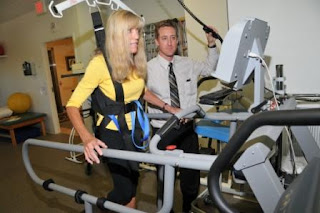Physical Therapy Helps!
The Hidden Link Between Sleep and Pain
This is typically a time for new year resolutions. For most individuals, this involves exercising and healthy eating, but sleep is equally (if not more) important. One of the best things you can do for yourself this year is to try and get enough sleep. In fact, did you know that there is a correlation between sleep and pain?
Some people sleep longer because they are in pain, while others cannot sleep at all. P...ain affects the way a person sleeps and a lack of sleep can intensify pain. Individuals who suffer from chronic pain may experience sleep disorders. In fact, pain is one of the causes of insomnia.
Sleep disorder symptoms include difficulty falling asleep, waking up in the middle of the night, waking up early in the morning, restless sleep, and overall dissatisfaction with the quality of sleep. The consistent interruption of sleep triggers a vicious cycle of sleep deprivation and increased pain. The less sleep a person gets, the more intense the pain can become.
Strategies for Improved Sleep
If pain (or any other reason) is affecting the quality of your sleep, start by identifying the cause of the problem. The first step is an assessment of the sleeping environment and lifestyle habits. Here are some questions to answer:
•Is the bedroom a quiet place and are all lights switched off? Is there a television or laptop (and associated glare) in the bedroom?
•What are you sleeping on? How old is the mattress? Does your pillow provide enough support for your neck and head?
•What are you eating and drinking before you go to sleep? Are you consuming caffeinated beverages late in the day? Are you eating big meals close to bedtime?
•Are you sleeping at the same time every day? Are you avoiding stressful conversations or situations before going to bed?
By facilitating an environment that is quiet and comfortable, you will set the stage for sound sleep. A physical therapist can also help you sleep better by teaching you techniques such as autogenic relaxation, progressive muscle relaxation, and visualization.
Message From Your Physical Therapist
"Don't Lose Sleep Over It"
If pain is affecting your sleep patterns, physical therapy can play a big role in the recovery process. The combination of pain and lack of sleep creates a vicious cycle that can get progressively worse, if left untreated.
Fortunately, a physical therapist can identify the underlying cause of pain and create a plan for lasting pain relief. Using a combination of hands-on techniques (including joint mobilizations and massage), the therapist will help reduce muscle tension. This will help you sleep better. A therapist will also design a stretching and strengthening program to restore muscle balance and reduce pain; restoring normal sleep patterns.
If you have pain and are losing sleep over it, reach out to us, your physical therapy providers. We'll help you reduce pain and sleep better. We don't want you to lose any more sleep over this and it is time for you to start living a pain-free life.
Call us today.
561-833-1747See More
The Hidden Link Between Sleep and Pain
This is typically a time for new year resolutions. For most individuals, this involves exercising and healthy eating, but sleep is equally (if not more) important. One of the best things you can do for yourself this year is to try and get enough sleep. In fact, did you know that there is a correlation between sleep and pain?
Some people sleep longer because they are in pain, while others cannot sleep at all. P...ain affects the way a person sleeps and a lack of sleep can intensify pain. Individuals who suffer from chronic pain may experience sleep disorders. In fact, pain is one of the causes of insomnia.
Sleep disorder symptoms include difficulty falling asleep, waking up in the middle of the night, waking up early in the morning, restless sleep, and overall dissatisfaction with the quality of sleep. The consistent interruption of sleep triggers a vicious cycle of sleep deprivation and increased pain. The less sleep a person gets, the more intense the pain can become.
Strategies for Improved Sleep
If pain (or any other reason) is affecting the quality of your sleep, start by identifying the cause of the problem. The first step is an assessment of the sleeping environment and lifestyle habits. Here are some questions to answer:
•Is the bedroom a quiet place and are all lights switched off? Is there a television or laptop (and associated glare) in the bedroom?
•What are you sleeping on? How old is the mattress? Does your pillow provide enough support for your neck and head?
•What are you eating and drinking before you go to sleep? Are you consuming caffeinated beverages late in the day? Are you eating big meals close to bedtime?
•Are you sleeping at the same time every day? Are you avoiding stressful conversations or situations before going to bed?
By facilitating an environment that is quiet and comfortable, you will set the stage for sound sleep. A physical therapist can also help you sleep better by teaching you techniques such as autogenic relaxation, progressive muscle relaxation, and visualization.
Message From Your Physical Therapist
"Don't Lose Sleep Over It"
If pain is affecting your sleep patterns, physical therapy can play a big role in the recovery process. The combination of pain and lack of sleep creates a vicious cycle that can get progressively worse, if left untreated.
Fortunately, a physical therapist can identify the underlying cause of pain and create a plan for lasting pain relief. Using a combination of hands-on techniques (including joint mobilizations and massage), the therapist will help reduce muscle tension. This will help you sleep better. A therapist will also design a stretching and strengthening program to restore muscle balance and reduce pain; restoring normal sleep patterns.
If you have pain and are losing sleep over it, reach out to us, your physical therapy providers. We'll help you reduce pain and sleep better. We don't want you to lose any more sleep over this and it is time for you to start living a pain-free life.
Call us today.
561-833-1747See More

 Each year, 2 million people suffer from whiplash
related to car accidents in the United States alone.
Each year, 2 million people suffer from whiplash
related to car accidents in the United States alone. In a study in the Journal of Rheumatology (2007),
a systematic review was performed of the existing literature on neck pain
related to car accidents. The evidence strongly supported the use of
stretching/strengthening exercises and mobilizations. Also, treatment with
physical therapy was less expensive in the long run
and reduced long-term disability compared to other treatment options.
In a study in the Journal of Rheumatology (2007),
a systematic review was performed of the existing literature on neck pain
related to car accidents. The evidence strongly supported the use of
stretching/strengthening exercises and mobilizations. Also, treatment with
physical therapy was less expensive in the long run
and reduced long-term disability compared to other treatment options. In most cases, the potential for recover is high,
especially with the right care as early as possible. A return to activity as
soon as possible helps significantly. Although symptoms may be around for a
while, the pain will improve within a few days or weeks. Be sure to continue
with the medicines prescribed by your doctor to aid with early movement.
In most cases, the potential for recover is high,
especially with the right care as early as possible. A return to activity as
soon as possible helps significantly. Although symptoms may be around for a
while, the pain will improve within a few days or weeks. Be sure to continue
with the medicines prescribed by your doctor to aid with early movement.





























